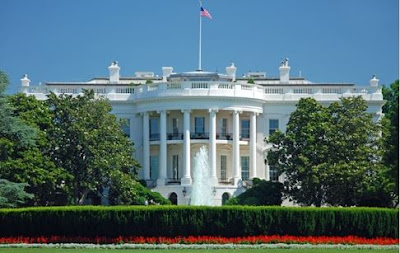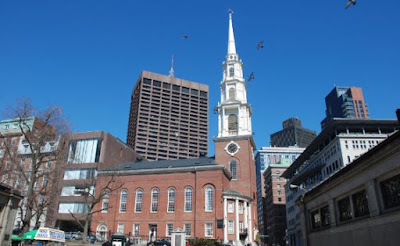Iwalked Washington D.C.’S White House - When Pierre Charles L’Enfant was hired to design Washington D.C., part of his commission was to propose on the design of a grand new “Presidential Palace.” Unfortunately, L’Enfant was fired for insubordination prior to “getting around” to sharing his vision. In response, a design contest was held in 1792 for which nine proposals would be submitted. The winner of the contest would receive for their efforts $500 or a medal of equal value. Second prize would offer the sum of $150. The second place entry was awarded to an architect from Richmond, VA, John Collins, who submitted his entry under the pseudonym “A.Z.” The design was said to emulate the Villa Rotunda just outside of Vicenza, Italy. Its entry has long been speculated to have been submitted by Thomas Jefferson, however, no direct evidence to confirm this has ever been found. The first prize was awarded to a self-taught Irish-born architect named James Hoban on July 17, 1792. Hoban’s design called for construction of a home that drew inspiration from the Leinster House in Dublin, Ireland.
 |
| Washington D.C.’S White House |
Construction on the White House would commence on October 13, 1792. Ironically, in very un-Washingtonian fashion, no formal ceremony was held. The building would be constructed over an eight-year period and was ready for occupancy on November 1, 1800. John Adams, the second President of the United States, was the first president to reside here. Washington, who oversaw a vast amount of the building’s construction, unfortunately never had the opportunity to live within the Presidential Palace. Adam’s residency would not last too long either though as he was only able to live within the White House during the final four months of his presidency.
When President Thomas Jefferson moved into the home in 1801 he was full of criticism of the building (perhaps in response to losing the design competition). Upon moving onto the premise Jefferson declared the property too big by stating it was, “big enough for two emperors, one Pope and the grand lama.” And Jefferson’s response to this declaration? Well, he immediately began making revisions to the structure by hiring US Capitol architect Benjamin Latrobe. These alterations included the addition of single-story wings to either side of the main building for added storage to Jefferson’s “already too big” home.
In August 1814, during the War of 1812, the British began to overtake the city of Washington and many occupants began to flee. Amongst those who left the city were President James Madison and his wife Dolley. Prior to her departure Dolley grabbed a copy of Gilbert Stuart’s famous portrait of George Washington (known to many as that which graces every $1 bill) while other aides ensured the safety of the Declaration of Independence and Constitution. On August 14, 1814, the British officially set the White House to torch and the building would only be saved by the hard rains falling from the sky that evening. James Hoban would be brought back in March 1815 to begin to reconstruct the charred remains of his original design. During his reconstruction, Hoban added a series of porticos to the building’s north and side and also painted the entire structure white. Some has theorized that Hoban’s decision to paint the building white was to cover-up the smoke and burn stains that resided on the exterior.
Hoban’s revitalized White House was a social curiosity to one famed visitor in the 19th Century and also the site of a historic first a few years later. In 1842, the White House was visited by esteemed author Charles Dickens who later wrote of his unique experience. Expecting a warm reception upon arrival Dickens was taken aback when he arrived with his official White House invite and found no one to greet him. Instead he escorted himself onto the premises and inspected the entire property without an intervention or being questioning during his exploration. A few years later the White House was the happy site of the only marriage ceremony for a U.S. President when Grover Cleveland, the 22nd and 24th President of the United States (and only president to serve two non-consecutive terms), married Frances Folsom. The wedding which occurred on June 2, 1886 was held within the White House’s Blue Room.
The White House would not see its next significant structural changes until just after the turn of the 20th century when a number of changes were set to occur. During President Theodore Roosevelt’s administration, he oversaw the addition of increased living space within the building’s third story attic. It was also Roosevelt who coined the official nickname of the White House around this time in 1901. Two other significant changes which would be implemented over the ensuing years included the additions of the West Wing and Oval Office. Originally known as the Yellow Room, the Oval Office served a number of purposes before becoming the official offices to the President of the United States. For instance, Thomas Jefferson was known to use it for practicing his violin. Woodrow Wilson, meanwhile, found the room a romantic setting sufficient to propose to his second wife, Edith Bolling. The last significant addition to the White House would occur in 1942 when President Franklin Delano Roosevelt authorized construction of the East Wing which would occur in 1942. This final alteration would provide the symmetry of the building you see today.
Public tours of the White House are available, however, be prepared to plan ahead. Requests must be made a minimum of twenty one days in advance through your local Congressman and it is recommended that you provide your request up to six months in advance. Tours, as provided, may be offered Tuesday-Thursday 7:30-11:00am, Fridays 7:30am-12pm and Saturdays 7:30am-1pm. Please note, tours are typically offered only to U.S. citizens unless coordinated through your local embassy and providing a request directly through them.
Fun facts that you may learn as part of your tour include insight as to the building’s architecture, history and occupants. For instance you may learn how the White House requires five hundred seventy gallons of paint. When the exterior was recently restored in 1996, workers found up to twenty-eight coats of this paint (some of which covered the fire damage from 1814)! In relation to occupants, you may also get to witness or cross paths with one of the five full-time chefs on-site that may serve on the upwards of up to one hundred forty guests on any one occasion.
To learn about famous ghosts and haunts of the White House you may





